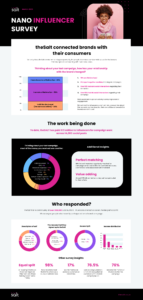
More and more marketers and brand managers are realising that their best brand ambassadors are their very own consumers, but they seem unsure where to find them and subsequently, how to “on-board” them. Enter theSALT, specialists in influencer marketing, offering their clients positive brand conversations that originate from existing customers.

“A marketer’s existing customers are a brand’s most powerful asset. You can bet your house that if a consumer has a good experience with a brand they’re passionate about, they’re going to tell a lot of people about it – online and offline,” says Pieter Groenewald, Managing Director of theSALT.
“There is more value for marketers in gaining people who fall in love with a brand, compared to people just liking it. But the biggest barrier to entry that we see from marketers is that they find it challenging to build influencer marketing into their strategies when utilising their own resources due to the complexity of sourcing and managing a group of brand advocates.”
theSALT’s business model, as part of the Nfinity Group of companies, affords brands the opportunity to access their own loyal consumer base, which are then trained and managed from start to finish as influencers in brand campaigns.

Being part of the Nfinity Group has allowed theSALT access to a bigger network of expertise and infrastructure that has been invaluable and an enabler for the business to focus only on ‘making it happen’ for their clients. “Over the past few years, our business has grown exponentially,” says Pieter. “I believe that the market has really embraced influencer marketing and we’ve had the advantage of being around for a few years already, with a substantial database of on-the-ground influencers that are more than willing to share their brand experiences and testimonials amongst their own communities via word of mouth both on- and off-line.”
More and more brands are engaging with theSALT, allowing the business to open an additional office in Cape Town and even to start exploring international expansion.

But why not pay a local celebrity to endorse the brand? They have massive followers on social media after all. Pieter says that there are a couple of differences worth noting: “while celebrities are selected based on the size of their audience as well as their niche (fashion, beauty, sport etc.), micro-influencers from theSALT are selected on the basis that they are an existing consumer and can speak about their “own” brand experience. Don’t confuse reach and influence – depending on your strategy you can decide to use either or, or even both categories.”

He points out that celebrities are mostly limited to one-way communication online by broadcasting a brand message to their audience while micro-influencers can have two-conversations with their community. “It’s also important to note the difference between an audience and a community too – an audience is unknown to the celeb, where the community is a known audience to a micro-influencer,” he says.

“Possibly the largest difference of all though, is that actual word of mouth conversations in our daily environments is still the most powerful form of marketing – all research proves this. Our influencers on the ground are able to engage with real people face-to-face, in relevant environments and when they are most receptive to the messaging. This element solves one of the biggest brand challenges: getting the message out there at the right time in the right environment thus shortening the path from awareness to purchase decisions.
Consumers and their word of mouth testimonials need to be part of the marketing mix, it’s that simple. The brands that are embracing this strategy are really reaping the rewards,” says Pieter.
- Automation and AI: Super-Tools to level up your business - 24th July 2024
- Salesforce Launches First Autonomous AI Agent - 19th July 2024
- WPP champions inclusive creativity at inaugural Unite South Africa Awards during Pride Month - 19th July 2024





